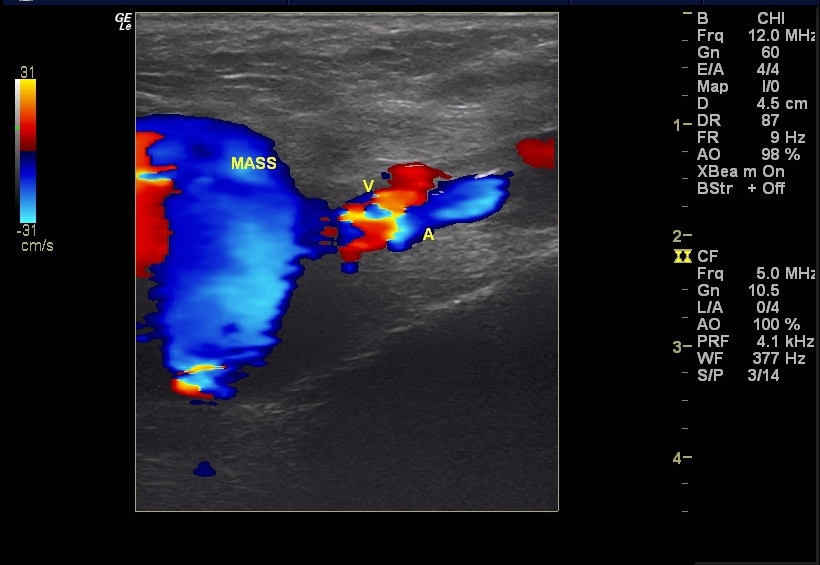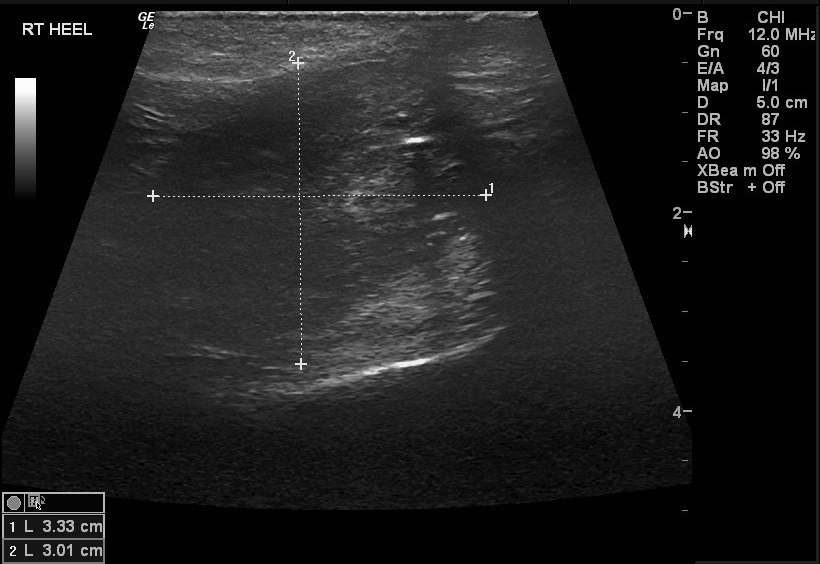Back to Annual Meeting Program
Perioperative Arteriovenous Fistula and Pseudoaneurysm after Plantar Fascia Release: Diagnosis and Intervention
Ginger L Manos, Stuart A. Harlin, Aaron B. Montgomery
Coastal Vascular & Interventional, PLLC, Pensacola, FL
INTRODUCTION:
Acquired arteriovenous fistulas are historically attributed to penetrating injuries, most commonly to the extremities. However, iatrogenic arteriovenous fistulas are becoming more prevalent. We discuss the case of a patient presenting with an acquired arteriovenous fistula and pseudoaneurysm following a plantar fascia release of the foot.
METHODS:
A healthy 50 year old white male presents with a 6 month history of swelling, numbness, and pain in his right foot. The patient previously underwent right foot surgery for recurrent, severe plantar fasciitis. Post-operatively, he underwent two hematoma drainage attempts in the office, each time aspirating syringes of blood without resolution of symptoms and recurrent swelling. He subsequently presented to vascular surgery for evaluation. On physical examination, a bruit was auscultated on the medial plantar aspect of the right foot. In addition, the foot demonstrated signs of swelling and venous congestion. An arterial duplex revealed a large pseuodaneurysm (Image 1). The patient was subsequently scheduled for an arteriogram and intervention. The arteriogram revealed a pseudoaneurysm and arteriovenous fistula, which correlated with the duplex examination. The plantar branch of the posterior tibial artery containing the abnormality was selected with a .018 inch catheter. Coil embolization of the feeding artery was performed in combination with direct thrombin injections under ultrasound guidance. At the end of the procedure, minimal flow was demonstrated and the foot was wrapped with a pressure dressing.
RESULTS:
The patient was seen back on post-operative day five with a repeat duplex. The right foot duplex revealed no evidence of residual flow within the pseudoaneurysm. The patient reports he is ambulating without difficulty and the swelling, numbness, and pain have resolved. He was released to perform normal activity.
CONCLUSIONS:
Traditional treatment of acquired arteriovenous fistula requires open operative repair. More commonly, an endovascular approach can be safe and effective in the treatment of acquired arteriovenous fistulas and peudoanerysms involving the foot.


Back to Annual Meeting Program

